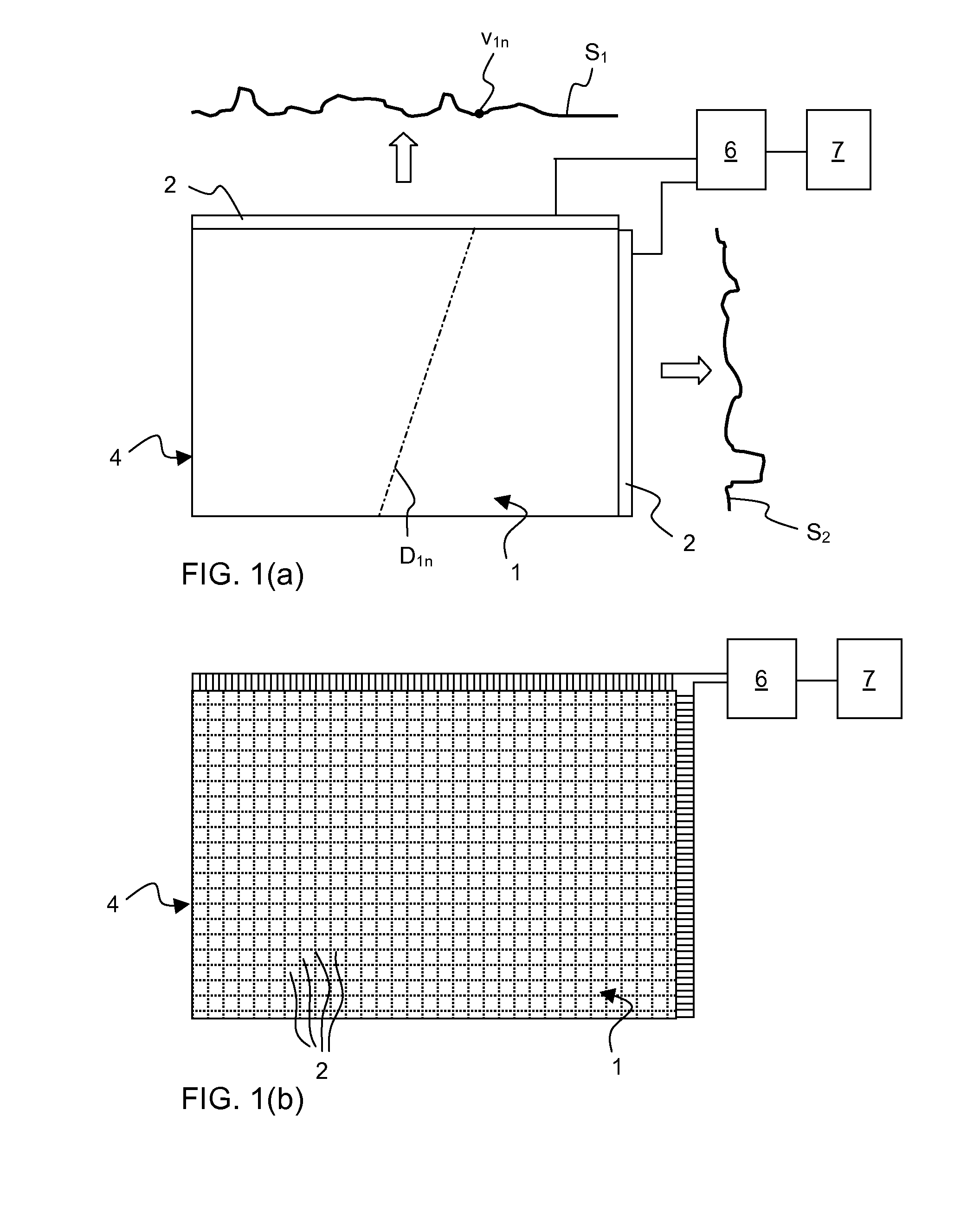Data processing in relation to a multi-touch sensing apparatus
a multi-touch sensing and data processing technology, applied in the direction of electric digital data processing, instruments, computing, etc., can solve the problems of difficult to properly detect the touch on the touch surface at all times, affecting the user experience, and requiring a more demanding task for the identification of touches
- Summary
- Abstract
- Description
- Claims
- Application Information
AI Technical Summary
Benefits of technology
Problems solved by technology
Method used
Image
Examples
embodiment 1
oritization
[0078]FIG. 3(a) is a flow chart of a method of extracting data from a multi-touch system according to an embodiment of the present invention. As shown, the method operates in a repeating sequence of detection frames, where each detection frame involves steps 300-303. In step 300, one or more sensor signals is obtained (e.g. sampled) from the sensor(s) in the touch system. The sensor signal(s) represents touch objects on the touch surface of the touch system. In step 301, the sensor signal(s) are processed for identification of touches. As will be further exemplified below, the processing in step 301 may be designed to actively favor certain touches to be identified, namely touches that are deemed to correspond to a touch identified in one or more preceding frames. This essentially means that touches with history (i.e. traces) are favored over new touches. This type of prioritization of touches is also called “temporal prioritization” in the following description. In step ...
embodiment 2
ritization
[0116]Other types of prioritization of touches may be applied, as a supplement or alternative to the temporal prioritization. Below, a “spatial prioritization” will be described with reference to FIGS. 9-10. This prioritization means that touches in certain predefined areas (“priority areas”) on the touch surface 1 are favored over other touches.
[0117]FIG. 9(a) is a flow chart of a method of extracting data with spatial prioritization. Steps 900 and 903 are the same as steps 300 and 303, and the description will not be repeated.
[0118]In step 901, the sensor signal(s) are processed for identification of touches. As noted above, the processing in step 901 may be designed to actively favor certain touches to be identified, namely touches that are deemed to fall within one or more priority areas on the touch surface 1. The location of the priority areas is determined based on a step 901′ of accessing a data structure denoted “priority area definition” that stores data on the l...
PUM
 Login to View More
Login to View More Abstract
Description
Claims
Application Information
 Login to View More
Login to View More - R&D
- Intellectual Property
- Life Sciences
- Materials
- Tech Scout
- Unparalleled Data Quality
- Higher Quality Content
- 60% Fewer Hallucinations
Browse by: Latest US Patents, China's latest patents, Technical Efficacy Thesaurus, Application Domain, Technology Topic, Popular Technical Reports.
© 2025 PatSnap. All rights reserved.Legal|Privacy policy|Modern Slavery Act Transparency Statement|Sitemap|About US| Contact US: help@patsnap.com



